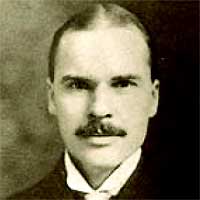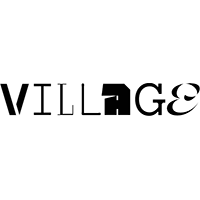
I know I announced I would include the last albums of July in the August episode of My Type of Music, but that may make the next episode a bloated one. Better post a follow-up and have them done.
On a somewhat related note, the village of Vence where we spent our family vacation hosted their music festival Nuits du Sud for the thirteenth consecutive year. Usually the programme is not of much interest, so I couldn't believe my eyes when I noticed George Clinton & Parliament-Funkadelic on this year's poster. As the entrance fee was comparatively low I decided to introduce my eldest daughter Eliza, 13, to the genius of music history's greatest funkateer.
Maggot Brain, solo by Michael Hampton – Funkadelic in Atlantic City
The show started at 11:00 pm with a poignant rendition of Eddie Hazel's 1971 classic Maggot Brain by a visibly emotional Michael Hampton; a tribute to the recently deceased guitarist/vocalist Garry Shider and guitarist Phelps "Catfish" Collins who both lost their battle with cancer – the former two months ago, the latter the very day of the concert. Then the concert picked up, with an overcrowded stage full of flamboyant figures giving up the funk and tearing the roof off the sucker for two hours straight. I mean, many of these guys could be my father, and I am no spring chicken anymore myself. Some fragments of the concert made their way to YouTube courtesy of The Funkystators.
Unfortunately there is a strict curfew policy for the festival. As it is held in the big square in the town itself, all concerts have to stop at 01:00 am. The organisation clearly didn't know any better – they should have skipped the opening act and foreseen the full four hours for the unstoppable wave that is George Clinton. Neither band nor audience were pleased when sound and lights were cut dead after the last song, and the organiser wasn't able to place one single word over the roaring crowd that didn't let up for over twenty minutes.
After this little music-related detour, let's get on with the second half of the July episode.

We pick up where we left off with a magical cover for Sky At Night, the fifth album for the Manchester indie rock trio I Am Kloot which was produced by Elbow's Guy Garvey and Craig Potter. I like the subtly subversive nature of this poetic night shot – the starry sky seems to start way too low, in the area where the tree crowns are supposed to be. The tastefully spaced Clarendon caps in simple white provide an unassuming finishing touch.

Also rather subversive, but less subtly so, is the great cover shot for Serotonin, the third album for the British indie rock band Mystery Jets. This bizarre bathroom scene bathing in greenish hues oozes summery Mediterranean charm, with all four band members looking equally out of place and perfectly at ease. Especially the one standing in front of the mirror with both towels wrapped in a feminine way and spraying deodorant under his armpits brings the whole scene home.
Again spaced caps provide a very tasteful typographic treatment – the modulated skyline sans is one of the digitisations of Morris Fuller Benton's Empire, and below is Tobias Frere-Jones' ubiquitous Interstate.

I've mentioned in previous instalments that I'm all for judicious customisation of off-the-shelf type. I am also aware of commercial rap music's obsession with dollar signs, yet the artist's name on the album cover for Teflon Don by Miami's famed rapper Rick Ross doesn't do much for me. The customisations on the album title are a bit aimless; I think for this kind of effect they would have been better off with a combination of something like FF Polymorph East and West. Also the cover photograph owes a lot to soul giant Isaac Hayes.

Now you'll have to agree something bizarre is happening with last year's Focus on Fontructors – revealed she's holding both arms next to her head with her hands on top of it. The black sleeves of her sweater or shirt completely dissolve in the background, making the only visible part of her hands (her intertwined fingers) look… weird. What were they thinking?
As for the type – the geometric stencil face is Futura Black, often associated with soul and mod music, so that is an apt choice. Neutraface just below isn't, especially set in all caps, as it is more an Art Deco face. I guess the designer selected it simply because it looks pretty, and that really is putting the cart before the horse when it comes to type selection.

I find the cover for The Way Out, the first album in over five years for The Books, the electronic duo from New York City, oddly intriguing. I never stopped to think about it so I never properly investigated this, but in addition to the obvious tech-inspired designs I have the impression electronic music also often appropriates the language of psychedelia. In a way this makes sense, because in the current mainstream musical landscape one may argue electronic music comes closest in spirit to this genre.

I also wanted to include the band logo (taken from the official band site) – a custom designed dotted geometric sans – because its multicoloured cuteness simply makes me smile. That's good enough a reason I guess.

And this is the other end of the design spectrum in electronica. Splazsh, producer Darren Cunningham's second album under the name Actress, features a minimalistic symmetric geometric cover design. Its op-art aspirations are not very well developed, and are defeated by that triple red frame. The position of the typography and choice of Gill Sans make sense, but all-in-all this is a bit hit and miss.

Ooh, I really like how The Like looks. Release Me, a collection with a 1960s sound by the Mark Ronson-produced quartet, is outfitted with a suitably sixties-looking album sleeve. The idea to have the band name spelled out on the vintage-looking dresses of the four singers is so simple yet so clever and above all fun, and the retro fashion poses and bare feet provide the divine finishing touch. Even the technical quality of the image looks authentic.
The typography perfectly complements the image. Centred all caps Futura conjures up early sixty album covers, an impression enhanced by the list of featured songs and the Stereo Sound logo in the upper right hand corner. This design doesn't miss a single beat.

Masts Of Manhatta is the fourth solo album for Grammy nominated singer-songwriter Tracy Bonham, who also appeared on The Blue Man Group's 2003 album The Complex and toured with them. Its cover features beautiful art by self-taught West Coast artist Donnie Molls. The monochrome yellow painting nicely accommodates the album sleeve format. Its rather rough brush strokes are mirrored in the distressed typewriter face used for the artist's name. The delicate copperplate script – its lightness reminds me of Young Baroque – adds a touch of elegance to the design.

Futura truly is a perennial favourite on covers and posters and so on, especially when simplicity is called for. This is merely an observation; I don't really approve of this. In most cases it betrays complacency and a lack of imagination. On the album cover for Faust Is Last by the German krautrock band Faust this simplicity is evoked by the x-ray of a hand on a black background devoid of any other design elements. Ever so slightly eerie but decent cover.

A lighter weight of Futura was used on the album cover for Flaws, the acoustic second album by British band Bombay Bicycle Club. Placing it vertically in a black bar left of the cover image is a bit of an easy way out, don't you think? Especially since the image offers lots of possibilities for interesting combinations of image and type. And the album title Flaws opens up many linguistic paths to explore. The type could be flawed to a certain degree, or its placement, or whatever. "But delicately spaced out light Futura caps are so pretty!" Dude, grow some cojones for crying out loud!

But don't look at the album cover for Memphis Blues – the new album featuring Cyndi Lauper's unique style of sultry singing and guest appearances by BB King and Jonny Lang – for inspiration. "Let's simply stick all the type in the dark corner at the top right." Boooring. Makes me want to stick all the type in the dark corner of the art director's behind. As there are no repeating characters there's no way to say if the brush type is custom lettered or a font. I think it was done by hand. And the album title underneath set in Neutraface (again, yawn) – what the frag is the meaning of those two half-arsed triangular shapes? To quote one of my all-time favourite philosophers:
Do, or do not. There is no try.
My oh my, it really shows I started following Angry Paul Rand on Twitter.

Mwah. Decent idea with a bit of potential, but it doesn't make for a very engaging album cover. United Nations of Sound, by RPA & the United Nations of Sound – the British band formed by former Verve frontman Richard Ashcroft – features production by hip-hop virtuoso No ID and crosses musical genre borders. Similarly the spoof logo is inspired by border-crossing organisations like the United Nations, Unicef, and so on. Fair enough, but what's the point of applying it on a sweater if the image does not give enough context to exploit the fact that it is on a sweater? Either use it in its undiluted graphic form, or show us a fragment of a human body at the edge of the frame. This is neither fish nor flesh. See above quote by a diminutive but very wise green creature (no it's not Kermit the Frog). The type is the trusty Alternate Gothic.

I was surprised by the gritty quality of the album cover for Praise & Blame, an album of blues and traditional gospel songs by Tom Jones. The church in the image is an obvious reference to the gospel theme. Its rudimentary shape is perfect for the grunge treatment of the photograph (unless it's a painting, I can't really tell). There's also something off about the oddly coloured sky and that high-contrast black serif face I can't seem to identify. A pleasantly imperfect and coherent design.

Another grunge design for Hunting My Dress, the latest album for California singer-songwriter Jesca Hoop, who started out as the nanny to Tom Waits' children. Colour me stupid, but I've always liked flipping a photograph on its head or tilting it sideways. It's a very literal take on looking at something from a different angle or perspective, yet often it creates surprising images. Here the upside-down image of a woman diving in the lake becomes quite macabre, as you almost get the impression she's been hanged by the neck until she was dead.
The typography is a little problematic. Because I am a child of the nineties I have a soft spot for grunge typography. Not the distressed and weathered faces, but the awkward, slightly off DIY designs. The apparent absence of craftsmanship and sound construction makes the appreciation of this typographic genre a highly subjective experience. How balanced is the imbalance, how consistent are the inconsistencies? In this instance I am a bit torn. The incorrect stress in the "N", the "V" substituted for the "U", the peculiar "Y" and the wobbly leg on the "R" all seem to work to a certain extent. However the "S" is overdoing it and breaks the spell, ruining this design for me.

One of the very few music genres I have difficulties getting into is heavy metal. This means I can almost never tell if the clichés are ironic, or just plain bad. I have no standard, no benchmark for determining if the album cover for Deth Red Sabaoth, the first album of new material in six years by Danzig is any good. The horror typeface and interlocking casual display sans in combination with the illustration style seem to refer to horror comics and pulp novels from the sixties and seventies. If that was the intention, fine, but not for me.

Following the unexpected death of drummer Jimmy Sullivan, Nightmare, the latest release by metal band Avenged Sevenfold is a reflection on death and despair that fits the menacing mood, which has shaped its sound over the years. The album cover riffs off these underlying themes, but in such a cliché manner that the whole design becomes laughable. The grunge typewriter face is unknown to me.

While the Likes album cover had a distinct sixties atmosphere to it, the sleeve for Grace Potter & The Nocturnals, the eponymous third album for the Vermont-based rock group, looks more seventies-ish. The Neuzeit S-like sans with swash ampersand is Michael Cina's Agostina.

I finish with Crazy For You, an album of 1960s influenced pop songs by Los Angeles-based lo-fi artist Best Coast only for its undeniable naive charm. The collage is perfectly suited for lo-fi music. The typography is a clear reference to those typical tourist postcards with fat extruded type – preferably set on a curved baseline – filled with a map or typical local scenery. Plus everybody loves a picture of a cute little cat.











